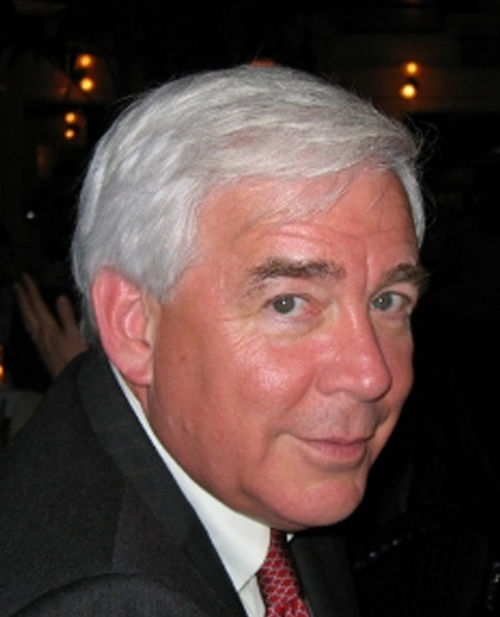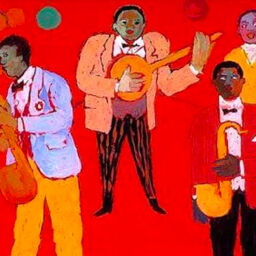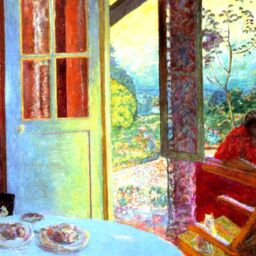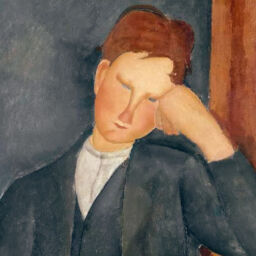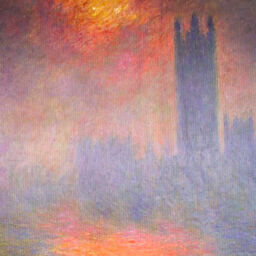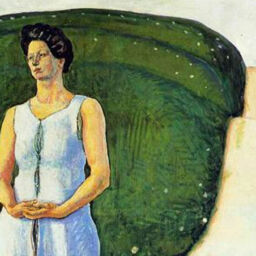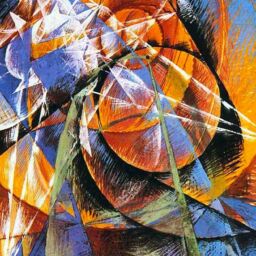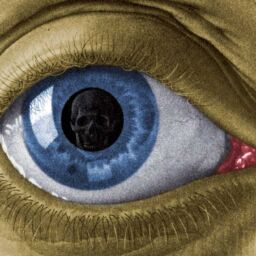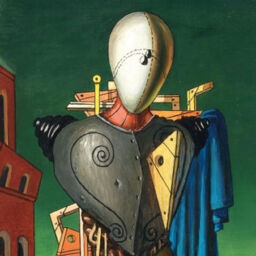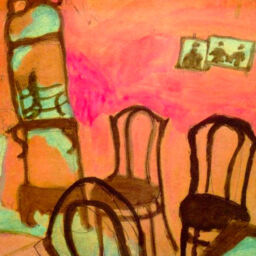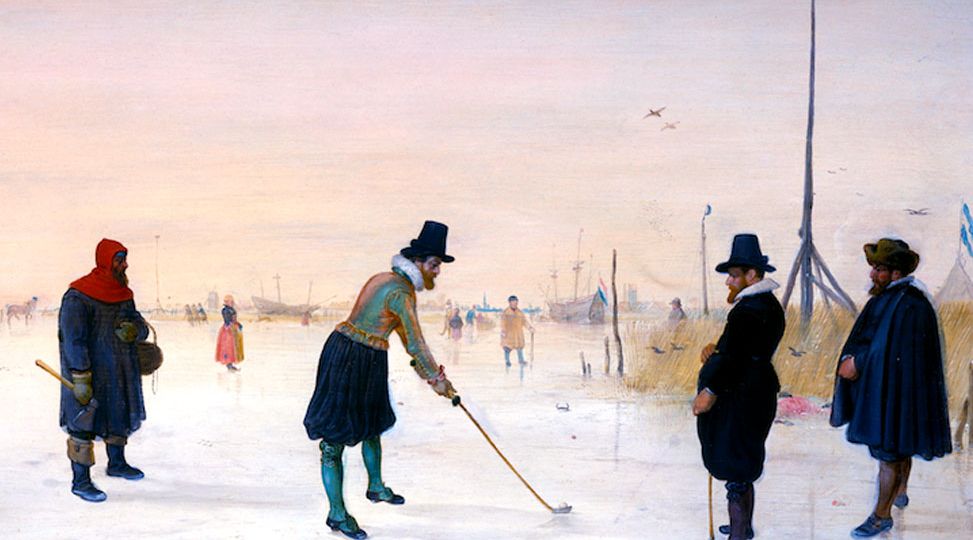
Golf: A Game of Individuation
, July 9, 2014
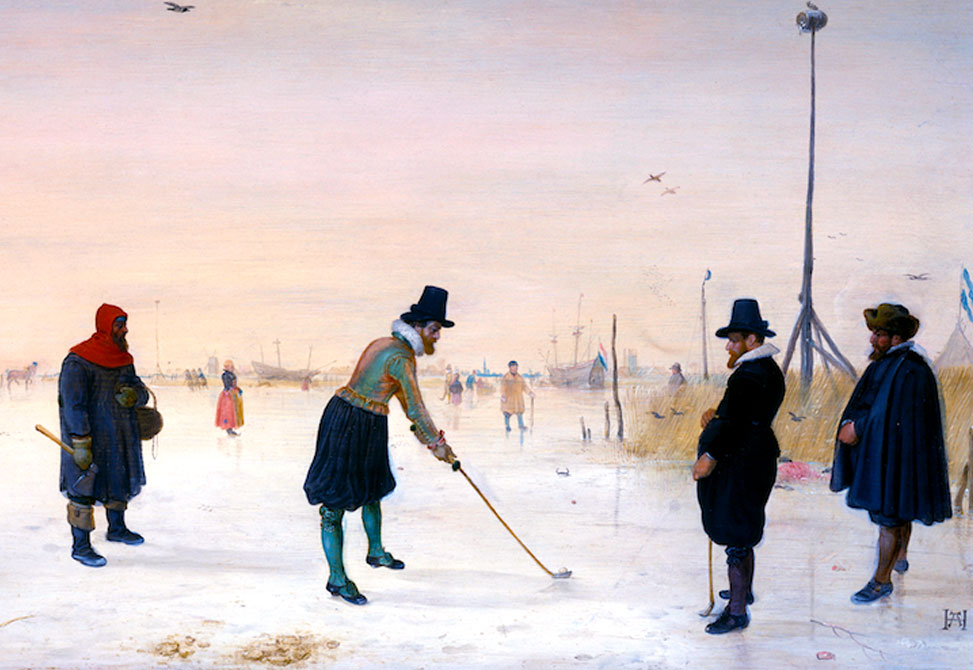
Jungian analyst John Beebe has noted that cinema offers a more provocative medium for analysis of typology than does prose fiction, primarily because one can see the characters, including their body language, gestures, and expressions, rather than just imagining them. The Greatest Game Ever Played (2005)i, particularly because of its subject matter, provides an illuminating study of the physical expression of some of the Jungian functions, through the characters of Francis Ouimet, Harry Vardon, and ten-year-old Eddie Lowery (Francis’ caddie).
The movie tells the story of Francis Ouimet’s unlikely and dramatic victory in the 1913 U.S. Open. From an Irish working-class family, Ouimet was a caddie at the prestigious and stuffy Country Club in Brookline outside Boston. He became an accomplished high school golfer and, sponsored by members of the Country Club, played in the U.S. Amateur Championship in 1913. In the movie, he then goes to work at a retail sporting goods store in Boston, focused on a career in business and no more golf. This was the outcome of an agreement with his father who posted the entry fee for the Amateur on the condition that Francis would drop golf if he failed to win. The Country Club members, his sponsors, were not dissuaded though, and they tried to recruit him to play in the upcoming Open Championship, to be held at their home course. Francis initially turned them down, but was finally enticed to take them up on their offer by a visit from his inspiring Anima figure and the opportunity to go up against Harry Vardon, his childhood hero.
Professional golf had come into its own in the two decades prior to World War I, and major championships were now won by professionals rather than amateurs. Harry Vardon, the Tiger Woods of his day and arguably the foremost golfer in the world, winner of five British Opens, headlined the field along with the equally talented Ted Ray, both Englishmen. The two champions were on a tour of the United States, sponsored by Lord Northcliffe, to capture the U.S. Open trophy, the only prestigious championship not in British hands. Other entrants were primarily talented English and American professionals. Ouimet was largely an unknown and his chances of winning were dismissed as insignificant.
Extraversion or Introversion?
Experienced golfers know that to play well requires unusual concentration. This is much more true at a spectator event where distractions multiply well beyond a player’s internal mental wandering. A golf swing requires approximately two seconds. It is surprising how many different thoughts, some completely unrelated, go through one’s mind during that brief act. Both Francis Ouimet and Harry Vardon were accomplished players. The film shows them in multiple scenes demonstrating intense concentration. Views show their tightly focused eyes and directed gaze—then a turn of the head down to the ball, an exhale to relax and focus, and the swing. We see Harry pushing unpleasant childhood memories out of consciousness, and Francis doing the same with the potential glory of hazardous shots.
Obviously, any sport requires well-developed extraverted sensation (Se), but what we see here is Se in its pairing with introverted judgment. Of extraverted sensing, Jung (1971, para. 606) wrote that it seeks “an accumulation of actual experiences of concrete objects,” and Beebe (2006) wrote that “the function can become, in the moment, so riveted on the reality ‘out there’ that it cannot recognize that other things may also be happening” (p. 137). Haas and Hunziker (2011) noted that in extraverted sensing “a level of attention is sustained that would quickly put others on ‘data overload’” (p. 35). And Mann et al (1968) wrote that extraverted sensing types are the “most manually skillful of individuals” (p. 43). On the other hand, while Myers (1995) wrote that sensing lends “often an interest in sports and outdoor recreation” (p. 90), which certainly seems to fit Harry and Francis, she also maintained that “introverts have powers of concentration” (p. 54) that are typically greater than those of dominant extraverts.
This apparent contradiction may be understood if we consider that extraverted sensing appears to be the auxiliary function of both these golfers while their dominant function is an introverted rational function. Indeed, there is evidence for an introverted feeling (Fi) dominant in both characters. Myers (1995) makes the important point that for these types, “as feeling is introverted, they conduct their outer lives mainly with their preferred perceptive process, either sensing or intuition. This makes them open-minded, flexible and adaptable” (p. 96), which are definitely positive attributes for a golfer. Myers noted further that introverted feeling types “may be particularly fitted for work that requires both devotion and a great adaptability” (p. 97), which is very true of golf given the need for diligent practice and the constantly changing course conditions. Shivas Irons, the professional in Michael Murphy’s Golf in the Kingdom (1972) famously said that no golf shot is ever the same again.
Jung notes an interesting relationship between power and introversion:
The introvert is distinguished by his self-assertion vis-à-vis the object. He struggles against any dependence on the object, he repels all its influences, and even fears it. So much the more he is dependent on the idea, which shields him from external reality and gives him the feeling of inner freedom—though he pays for this with a very noticeable power psychology (1971, para. 535).
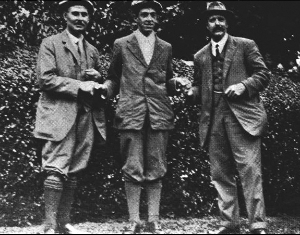
How Superior and Inferior Functions Affect Performance
Note that Harry did not mention friendship outright to Francis. Rather, he showed his high regard for Francis in a way that typifies the introverted feeling type who keeps his values close to his chest: He invited him to play the game that he, Harry, had built his life on. Indeed, both Harry and Francis are introverted feeling types. Both “have feelings that are deep but seldom expressed because inner tenderness and passionate conviction are both masked by reserve and repose—until one of the things they value most deeply seems in danger” (Myers, 1995, p. 95). For Harry this happens during the scene with Lord Northcliffe on the evening before the playoff. Northcliffe, drunk and messily eating oysters, insults Harry’s rival, the young Francis Ouimet, with an upper-class put-down: “If he couldn’t hit the ball a country mile he’d be digging ditches.” Harry himself came from a peasant family whose cottage was demolished to make way for a golf course, an event that probably generated his lifelong dedication to bettering the gentlemen who play. Consequently, here he drops his reserve and tells off Northcliffe: “We play to win out of sheer bloody pride at being the best. If Ouimet wins it will be because he is the best. Please give the respect a gentleman gives as a matter of course.”
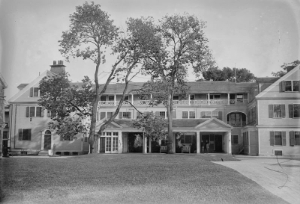
This interplay of class dynamics mirrors the interplay of dominant and inferior functions in the psyche of the characters—introverted feeling and extraverted thinking (Te). Figures of power (Northcliffe and the club chairman), who clearly exhibit extraverted thinking (a plan for everyone), earn the golfers’ disrespect, whereas commoners (Francis and Harry) flex their introverted feeling values to exert new authority. As Haas and Hunziker (2011) noted, the introverted feeling type “holds private and nonnegotiable core values deep within” and “does not tolerate violations of its core beliefs” (p. 104). And Mann et al (1968) wrote that Feeling types “tend to see the events of the world in the personal terms of who did what to whom: “[They are] liable to impute sinister motives to people whose behavior they find thoughtless or insensitive. It does not occur to feeling types that others do things in a detached way because of principles (thinking), because of practicality (sensation), or simply out of a desire to make things more exciting (intuition)” (p. 37).
Frequently, the inferior function is carried by the Anima or Animus complex, and this is so in The Greatest Game. The inferior function, von Franz wrote, is “infantile and tyrannical” (p. 11), closely attached to unconscious, ungovernable, unassimilated archetypal energies. Describing what kind of acts the inferior function generates, she wrote:
This function tends to have, in its negative aspect, a barbaric character. … If, for example introverts fall into extraversion, they do so in a possessed and barbaric way. I mean barbaric in the sense of being unable to exert control, being swept away, being unable to put a brake on, unable to stop (1971, p. 69).
Francis and Harry exhibit how extraverted thinking manifests when in the inferior position. Mann et al (1968) stated, “Thinking types do not trifle with time. They are likely to know what day of the week it is and what time of day it is” (p. 41). In separate scenes, both Harry and Francis turn to someone else and ask, “Where do we stand?” In golf speak they are asking what their score is relative to the field, in other words, what time is it? That they do not know demonstrates clear lack of facility with a function that always knows. Another example demonstrates von Franz’s comment that the inferior function has a barbaric character, when Francis butchers a thinking type’s skill at planning. When approached by his Anima figure (Sara in the film) which, according to theory, carries the inferior function, Francis abruptly abandons his refusal to play in the Open and barges into a meeting to ask if he can still accept. His reaction is quick and infantile, as inferior extraverted thinking is. Wrote Mann et al (1968) of well-developed Thinking: “Before starting anything, the thinking type examines what he conceives the whole situation to be, and attempts to perceive it in ideal terms. … Spontaneity [is] not particularly characteristic of thinking types” (p. 40). Spontaneous thinking is the only kind Francis does.
An Extraverted Sensation Coach
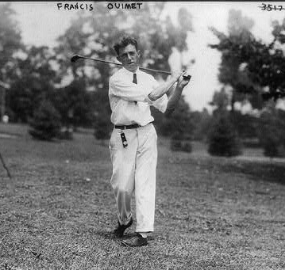
Extraverted sensing, said Beebe, (2004) “involves … a direct relationship with reality” (p. 96). Myers (1995) wrote: “the extraverted sensing type sees things as they are” (p. 99). And Mann et al (1968) noted that sensing types tend to respond without hesitation to environmental stimuli (like Eddie’s wisecrack noted above and like many of his actions detailed below), for they have no need to wait and incorporate additional information or thought into a response. Sensing types respond practically, rapidly, and accurately.
It is the time orientation of the sensation type that accounts for their efficiency in dealing with emergencies of any kind. They can respond to the slightest cue, grasp the nature of a situation at a glance, and, because they are comfortable in dealing with the present, act upon their perceptions without hesitation. They are not hampered by trying to decide between alternative courses of action; the event itself tells them the correct behavior. Because they are so geared to the present, they see much more in a situation than any other type can; this ability to read the depth of the present is the device they use to substitute for their lack of futurity. (p. 43)
Eddie’s dominant Se function makes him an ideal caddie for Francis, bringing him back to focus on the shot in the all-important present whenever his Fi function wanders away into the fuzzy land of values. What matters is performance now, not what it means.
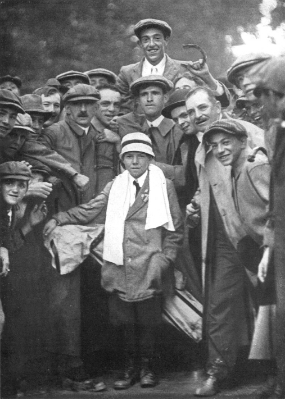
Looking at this relationship between caddie and player from the other side, we watch Francis extract himself from problem situations by returning to his extraverted sensing function and thereby regaining the ability to concentrate on the physical reality and task before him. Wheelwright (1982) wrote: “The easiest method of determining which are the developed functions is to observe how individuals work themselves out of a jam” (p. 64). And Hillman’s comments about the difference between emotion and Feeling help us understand that it is Francis’ superior Feeling function that allows him to adequately handle his deepest feelings, or emotions (von Franz and Hillman, 1971, p. 127). Over the course of the film, he gains mastery over his superior function, since his emotions got the better of him on the 18th hole at the U.S. Amateur and he failed to qualify several months before. We see him grapple with his emotions, then remember his auxiliary function, and smile at Eddie’s silliness, relax and avoid the distorted, inappropriate, and inadequate behavior that would be generated by his inferior Thinking function. In the climactic scene on the 17th tee during the playoff, it is Eddie’s grasp of reality that prevents Francis from falling for Harry’s gambit of baiting him with an emotional hook into an extremely difficult shot. Francis makes the safe shot and ultimately wins.
[1] Based on the book of the same name by Mark Frost (2002).
References
Beebe, J. (2004) Understanding consciousness through the theory of psychological types. In Cambray, J. and Carter, L. (Eds.), Analytical psychology: Contemporary perspectives in Jungian analysis (pp. 83-115). Hove, U.K.: Routledge.
Beebe, J. (2006) Psychological types. In Papadopoulos, R. (Ed.), The handbook of Jungian psychology: Theory, practice, and applications, (pp. 130-152). Hove, U.K.: Routledge.
Blocker, M. (Producer), & Paxton, B. (Director) (2005). The greatest game ever played [Motion Picture]. United States: Walt Disney Pictures.
Haas, L. & Hunziker, M. (2011). Building blocks of personality type: A guide to using the eight-process model of personality type. Temecula, CA: TypeLabs.
Jung, C. G. (1971). Psychological Types (H.G. Baynes, Trans., revised by R. F. C. Hull, Trans.), Bollingen Series XX, The collected works of C. G. Jung (v. 6)). Princeton, NJ: Princeton University Press. (Original work published 1921).
Mann, H., Siegler, M., & Osmond, H. (1968). The many worlds of time. Journal of Analytical Psychology, 13(1), 33-56.
Murphy, M. (1972). Golf in the kingdom. New York, NY, Penguin ARKANA.
Myers, I.B. (1995). Gifts differing. Mountain View, CA: CPP.
von Franz, M.L. & Hillman, J. (1971). Lectures on Jung’s typology. Dallas, TX: Spring Publications.
Wheelwright, J B. (1982) St. George and the dandelion: Forty years of practice as a Jungian analyst. Dallas, TX: Spring Publications.
Header Image
Hendrick Avercamp, “A Scene on the Ice” (ca. 1625). Courtesy: Teylers Museum, Haarlem.


